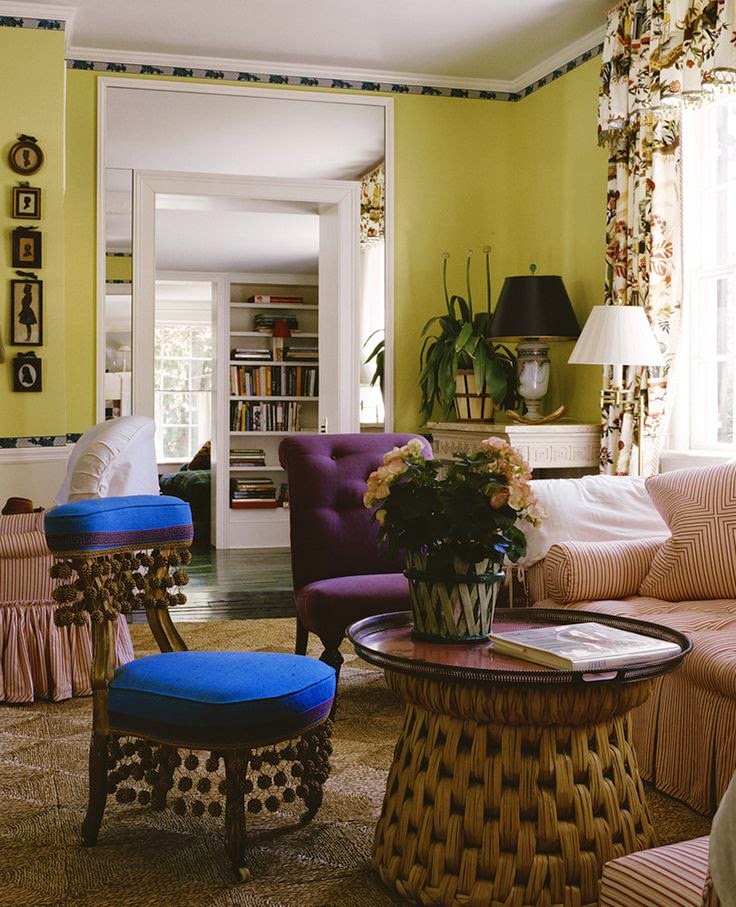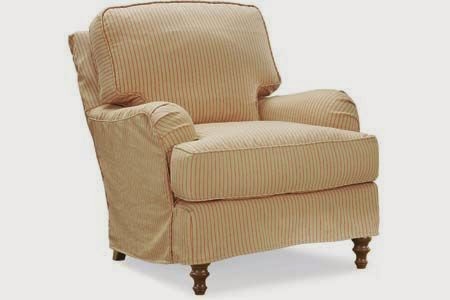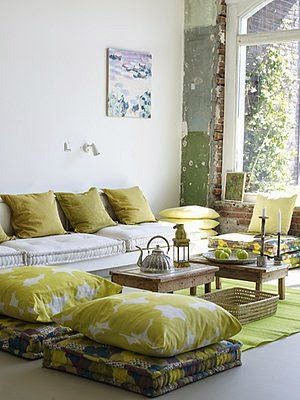SOFA, SO GOOD: Tips for Choosing Seating Frames, Fabrics and Styles
joy of nesting
above available through SHIREE HANSON SEGERSTROM
do your walls, ceilings, floors and sofa all have in common? They are the
biggest surfaces in your living room and therefore have the most visual impact
on its appearance. Unlike walls and
floors however, sofas must provide comfort and support. To get many years from
your investment, remember the following as you shop. These tips also apply to loveseats,
chairs and chaise lounges.
of kiln-dried hardwood with joints that are glued, dowelled and screwed. Kiln
drying removes the moisture from the wood, ensuring that it retains its shape
and stability. A frame made of green or knotted wood will shrink and crack.
Seating Support System
Every
frame has a seating support system. This is the surface on which the cushions sit (read below
for info on cushions). The best seating support is the eight-way hand tied
spring system. The manufacturer connects each spring to the
adjoining one with strong twine. The twine passes front to back, side to side
and then diagonally in both directions tying each spring securely.
Sinuous springs are “S” shaped and run from the front of the seat to the back.
These springs are supported by additional wires that cross from side to side.
This also makes for a strong seat, and works well in a
sleeker style sofa as it requires less space.
The third option is web suspension in which
bands of webbing cross the seat and back. The web suspension is the cheapest and least
preferable of the seating support system options.
above JEFFREY BILHUBER
Cush’
Tush
companies skimp on cushion quality. High quality cushions last longer and won’t lump
or break down. There are several choices of cushion construction but ideally, they
are made of high density foam with a Dacron or down-blend wrap for softness.
Keep in mind, down wraps as well as solid down and feather cushions require more rotation
and fluffing than Dacron wraps. If maintenance is an issue, this is an
important consideration. You’ll have to decide what’s more important to you,
comfort or time. If in time, your cushions don’t hold up, they can be replaced
without reupholstering the sofa. Cushions constructed of high density foam with
down blend wrap cost around $200 each.
above available through SHIREE HANSON SEGERSTROM
When
referring to back and seat cushion configurations we say “loose ” which means
cushions that are unattached; “tight” which means an upholstered back without a
separate cushion; and “attached” which means cushions are attached and not
removable for rotation, often seen on leather sofas. Unless it’s a sectional, seat
and back cushion configurations usually come in ones, twos, or threes. I prefer
sofas with one or three seat cushions because I like the look and because
guests don’t like to sit on the center “crack” between two seat cushions. However,
where space constrictions require a smaller sofa, two seat cushions are more practical and look better.
Wise
are available in widths ranging from 75 inches for a small sofa, also known as
an “apartment” sofa; 80 inches for a medium sofa; and 90 inches for a large
sofa. Under 75 inches is generally called a loveseat. Sofas over 100 inches are
generally sectionals.
Around It
floor plan and size of the room generally determines the style of sofa skirt I
choose for my projects. I love the look of a skirted sofa but in small spaces, an un-skirted
sofa is a much better choice because a sofa without a skirt takes up less space
visually. Box pleated skirts, skirts that have multiple pleats across the front,
tend to be formal and add material and labor costs to the overall price. They
are classic, crisp and beautiful. Shirred skirts are feminine and
beautiful but are best suited to feminine spaces. Flat skirts with pleats at the
corners are fine as long as the skirt has some type of stiff lining such as
Pellon.
Facts
Fabric quality, color,
style and fiber content are considerations for aesthetics, longevity and
maintenance. Some fabrics pill, others show spots or stain easily. Consider your lifestyle. Do you entertain? Do
you have children? What style is the rest of your furniture? How much natural light does your living room
have? Where will you place the sofa in relation to your windows?
above available through SHIREE HANSON SEGERSTROM
to choose fabrics with texture and a subtle pattern. This type of fabric may be
harder to coordinate with the rest of your furnishings but choosing solid fabrics,
particularly solid print cotton is a mistake if you have kids and pets. Another
option is slipcovering. Cotton slipcovers, conversely speaking, are great
because they are cleanable. They do require reshaping but if you don’t mind this,
a slipcover is a good option. I prefer dry cleaning my slipcovers to retain
their color and shape. I know this sounds a bit elementary but always stipulate
dry cleaning to your dry cleaner. I’ve had a few mishaps where they’ve opted
for wet cleaning without consulting me first. Wet cleaning is disastrous if the
seamstress or manufacturer hasn’t used preshrunk fabrics and threads.
above available through SHIREE HANSON SEGERSTROM
purchasing a sofa from a designer you choose from “program fabrics” or
“COM”, customer’s own material. “Program” fabrics are the fabrics that sofa
manufacturers provide. They are usually more cost efficient than “COM”. You can
choose from grades A to Z, A being the least expensive and Z being the most
expensive. Always choose from the highest grades. The less expensive grades
don’t have the best appearance or wear.
“COM” may add to the overall price of the piece but it gives my client
and me more control of the design scheme and custom quality. When program fabric choices fall short, COM fabrics fill the void.
above available through SHIREE HANSON SEGERSTROM
Style Sheet
dry clean slipcovers, however… in times when they won’t come completely clean
you may have to resort to washing them. However, this is a “Catch 22” because
if you must resort to washing the fabric,
it should be pre-washed before fabrication. Go into washing knowing you may have
to replace the slipcover altogether.
technique I use for choosing fabrics for an overall room: first choose a print,
then a texture, then two complimentary prints, then one to two solids. Choose
up to five or six fabrics for an average sized living room. Once all your
fabrics are chosen, decide where they’ll be placed including pillows, contrasting
welts and other trims.
favorite living room seating combination is an upholstered sofa, two
slipcovered chairs as part of the main seating, and a few wood framed chairs
with custom cushions as accents. In a large living room, two to three
conversation areas is preferable.
long and narrow living rooms, I like doing two loveseats flanking a fireplace
with two small, wood framed accent chairs and custom cushions.
above via SOUTH SHORE DECORATING blog
above via HOUSE BEAUTIFUL
above sectional available through SHIREE HANSON SEGERSTROM
above via TROPICAL CHIC DESIGN
above/below available through SHIREE HANSON SEGERSTROM
above/below available through SHIREE HANSON SEGERSTROM
above NICHOLAS HASLAM






















